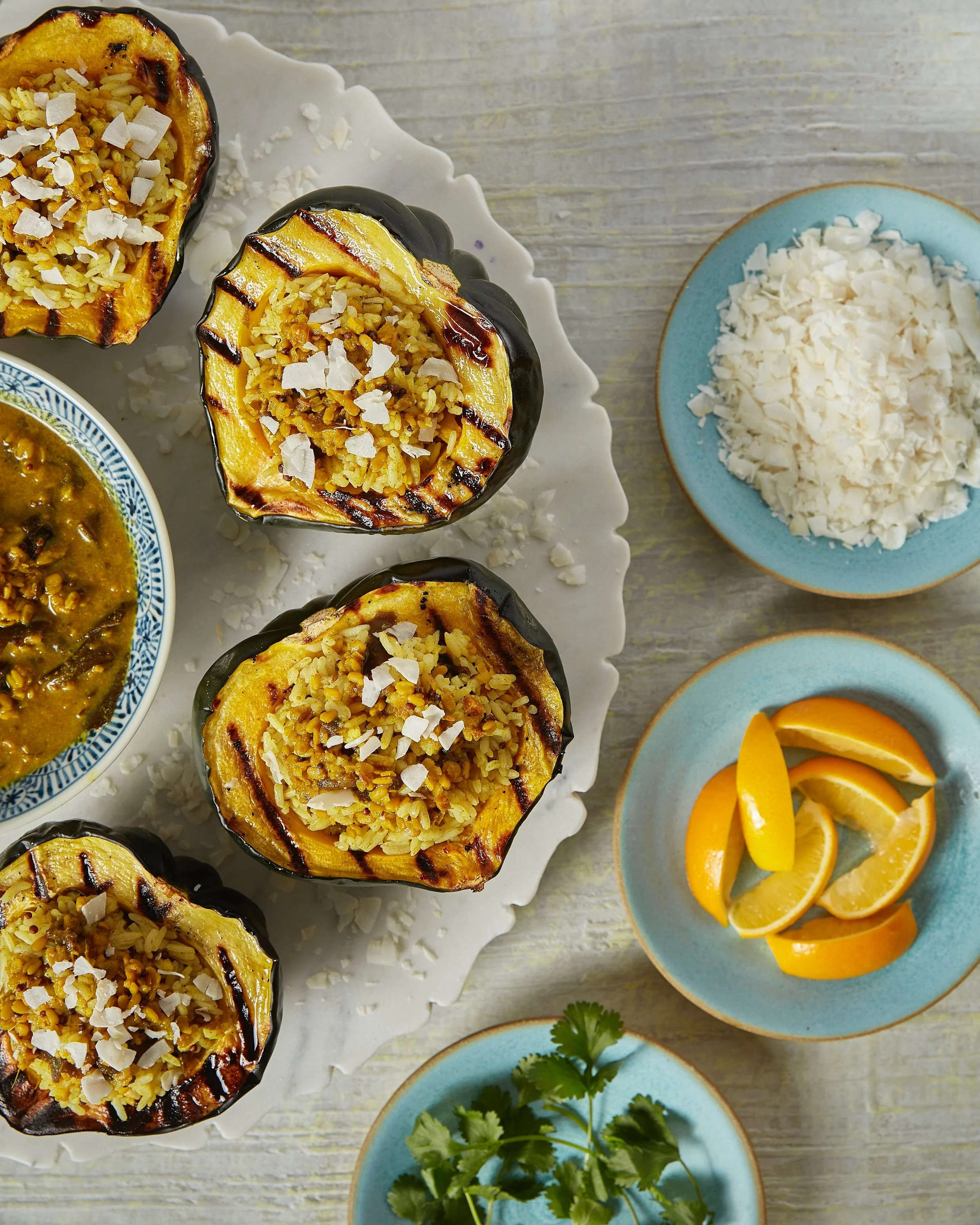All About Eggs
Fresh eggs from the chicken coop of Fiore and Michelle Moletz, owners of Della Terra and Burg’hers Brewing.
If you’re like me – an amateur baker who rarely has the patience to chill cookie dough before baking – eggs aren’t something that has ever impressed you. They’re an everyday ingredient found in all grocery stores (and, thanks to many city chicken coops, farm-fresh) for affordable prices; just another stepping stone on the way to a pumpkin pie.
But Selina Progar, head baker at Gluten Free Goat, has a different take. “In my opinion, the egg is the most remarkable ingredient on this Earth,” she says. “You can not replace it with anything and create the same product.”
As Selina says – and as amateur bakers are learning – eggs deserve respect. The uses for this ingredient are practically uncountable; fry it up whole for eating or add it to a cake for leavening. Separate it, and you can use the white for whipping and the yolk for fat.
To get the best out of your holiday recipes, Selina shares three tips for choosing eggs.
First: older is better. “Whenever you are baking, especially if you’re making a meringue or using egg whites, you often want to use an older egg,” Selina explains. “I’m definitely not against using fresh eggs when I’m baking, but overall, it’s more of a moral choice, so you can say, “Oh I use farm-fresh eggs.”
“Realistically, older eggs make a better baked good because, over time, the proteins in the egg slightly break down, and it creates a better mouthfeel in your baked goods as opposed to a really fresh egg that still has its entire structure.”
Second: Size matters. “A standard egg – a large egg – is 50 grams. Within that 50 grams is 20 grams of egg yolk and 30 grams of egg whites. If you see a recipe that states two eggs, that is 100 grams. You want to go towards the standard,” Selina says.
“If you go to the store and jumbo eggs are on sale, you’re going to get a completely different product if [your recipe] calls for a large egg and you’re using a jumbo egg. The ratios are going to be off. Sometimes a jumbo egg can weigh four ounces, and you’re almost doubling [the size].”
Third: Vegan substitutions work. Cooking allergen-friendly at the Gluten Free Goat, Selina uses aquafaba – chickpea liquid – as a replacement. She says it maintains a good consistency, just melting away with each bite.
But simplicity, Selina concludes, is what showcases eggs best. The pastry chef’s favorite recipes include pastry cream, which she says “maximizes this ingredient,” as well as brioche, and crème brûlée.
Sample the flavor of eggs (remember, simplicity!) in this recipe Selina shares with TABLE for a sweet, fluffy brioche.
Brioche
Makes 1 standard Pullman loaf
Allow two days for this recipe, as the dough needs to rest overnight in the fridge.
Ingredients
453 grams Bread Flour
6 grams Instant Yeast
181 grams eggs
90 grams milk
45 grams sugar
8 grams salt
272 grams softened butter
Instructions
To soften the butter, leave it on your counter overnight.
In the bowl of a stand mixer fitted with a paddle attachment combine eggs, milk, sugar, and salt. Then, add the flour and the yeast. Mix on speed 2 until combined then on speed 4 for 4 minutes.
Gradually add the butter on speed 4. Once the butter is fully incorporated turn the mixer to speed 6 and mix until the dough is pulling away from the sides of the bowl. This could take 20 minutes. At each 5 minute mark, scrape down the sides of the bowl to make sure the dough is incorporated evenly.
Place dough in a well-greased bowl and tightly wrap in plastic wrap and refrigerate overnight before use.
The next day, take the dough and punch the air out, flip it over onto a very lightly floured tabletop.
Spray the pan with pan spray, then roll the dough into a cylinder, using as little flour as possible, as it will create raw flour streaks in the center of the loaf. Press the dough into the pan. At this point, you can use your lid or not. If you are not using the lid, spray the top of the loaf and rest plastic wrap over the bread.
Proof in a warm environment, like on top of a running oven, until doubled in size. This could take a couple of hours. Bake at 350 degrees starting at 30 minutes. Check the loaf by seeing that it is golden brown and a skewer inserted in the center comes out clean. If the skewer does not come out clean, bake at 10-minute intervals until done. Once out of the oven, flip the loaf out immediately onto a cooling rack. Otherwise, the loaf will have sunken cheeks.
STORY BY MAGGIE WEAVER/RECIPE BY SELINA PROGAR/PHOTOGRAPHY BY DAVE BRYCE
12 Month - 6 issue subscription












Indulge in the taste spring with this delicious Cherry Galette